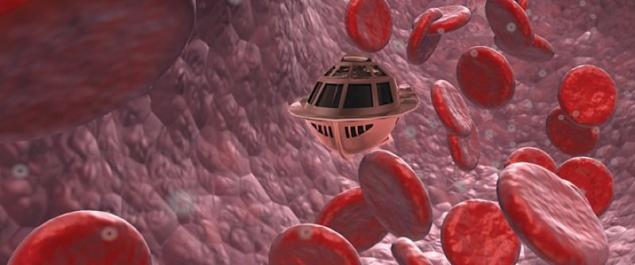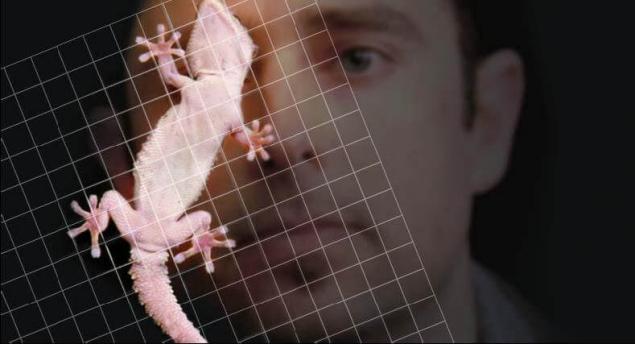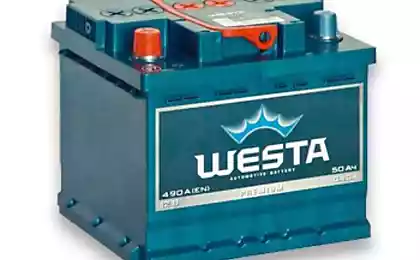631
Promising nandihalli will be able to accumulate and use for the movement of light energy
One of the cornerstones in the development of advanced nanodevices for their further use in medicine, engineering, biotechnology up to the last moment was the creation of mandviwalla, or rather, energy-efficient power supply for anodically. Some tangible successes in establishing such anodically reported to the scientific community, scientists of the University of Cambridge.

Your engines experts called ANT actuating nano transduser), and to manage them does not need the presence of a miniature of the pilot, as it was in many respects prophetic science-fiction film Fantastic voyage, released in 1966. Created in the laboratory of the Cambridge nandihalli will be managed remotely and, like microscopic ants will be able to produce energy and carry on the necessary distance payload, surpassing in magnitude the weight of their own body.
How it works
The principle of operation of nanodevices ANT is largely similar to the principle of operation of the spring mechanism. The basis of the engine – a set of gold nanoparticles, connected into a certain configuration gel-like material based on polymer responsive to a temperature change. By means of directed laser radiation, the nanoparticles heat up, which leads to increased temperature of the entire structure and, as a consequence, removal of water molecules from the polymer. The process is very fast and accompanied by a contraction in the "body" of nanodevices like a mechanical spring. Thus, the absorbed light energy is accumulated in the form of elastic mechanical energy of a compressed "nanospring".
Disabling the light source (in our case the laser) leads to an equally rapid cooling of the body ANT nanodevices and water uptake from the environment. As a result, the process is reversed – the polymer is gelled almost instantly increases in volume, releasing the accumulated energy of the light quanta. Gold nanoparticles acting as a catalyst, allows to increase the intensity of the process and the absolute value of the generated motor force. Again, it is critical that the expansion process nanodevices (and compression) occurs in a fraction of seconds and similar to microexplosion.

The most direct impact on the efficiency of the nanomachines have a van-der-waltz forces acting at the level of molecules of a substance. Hardly noticeable at the macro level, in everyday life, at the level of the nanoscale and their influence is very weighty. It is through the forces of van der Waals lizards geckos gain an amazing ability to rapidly move across the walls and ceiling of polished glass in contact with the surface of hundreds of thousands of tiny hairs that cover their limbs.

Created by scientists nandihalli ANT accumulate the energy flux, transforming most of it into energy of attraction of nanoparticles of heavy metal and molecules of the gel-like polymer. And it is very important that the energy generated at the moment of rupture of the formed bonds is several times higher than that which would be accrued due to a single compression of the material, not having the ability to continuous energy accumulation within a certain time period. Due to this difference, and is useful work required to accomplish the task.
Existing restrictions on the development of
Unfortunately, finding a way to effectively accumulate and release energy at the level of the nanomachines scientists have not yet found a way to focus energy flow in a desired direction that is needed for purposeful movement. At present, it is the last obstacle that separates the scientific community from the creation of managed mandviwalla that could lead to the movement of tiny nanobots, but by and large, from use as vehicles for drug delivery, remotely controlled instruments at carrying out microsurgical operations, etc.
However, the obtained results allow scientists at the University of Cambridge using the ANT nandihalli today to proceed with the development of controllable pumps and valves involved in mikropotokami liquid chips that will be used in lab-on-a-chip, biosensors and promising diagnostic equipment of new generation. published
P. S. And remember, only by changing their consumption — together we change the world! ©
Join us in Facebook , Vkontakte, Odnoklassniki
Source: geektimes.ru/company/dronk/blog/276050/

Your engines experts called ANT actuating nano transduser), and to manage them does not need the presence of a miniature of the pilot, as it was in many respects prophetic science-fiction film Fantastic voyage, released in 1966. Created in the laboratory of the Cambridge nandihalli will be managed remotely and, like microscopic ants will be able to produce energy and carry on the necessary distance payload, surpassing in magnitude the weight of their own body.
How it works
The principle of operation of nanodevices ANT is largely similar to the principle of operation of the spring mechanism. The basis of the engine – a set of gold nanoparticles, connected into a certain configuration gel-like material based on polymer responsive to a temperature change. By means of directed laser radiation, the nanoparticles heat up, which leads to increased temperature of the entire structure and, as a consequence, removal of water molecules from the polymer. The process is very fast and accompanied by a contraction in the "body" of nanodevices like a mechanical spring. Thus, the absorbed light energy is accumulated in the form of elastic mechanical energy of a compressed "nanospring".
Disabling the light source (in our case the laser) leads to an equally rapid cooling of the body ANT nanodevices and water uptake from the environment. As a result, the process is reversed – the polymer is gelled almost instantly increases in volume, releasing the accumulated energy of the light quanta. Gold nanoparticles acting as a catalyst, allows to increase the intensity of the process and the absolute value of the generated motor force. Again, it is critical that the expansion process nanodevices (and compression) occurs in a fraction of seconds and similar to microexplosion.

The most direct impact on the efficiency of the nanomachines have a van-der-waltz forces acting at the level of molecules of a substance. Hardly noticeable at the macro level, in everyday life, at the level of the nanoscale and their influence is very weighty. It is through the forces of van der Waals lizards geckos gain an amazing ability to rapidly move across the walls and ceiling of polished glass in contact with the surface of hundreds of thousands of tiny hairs that cover their limbs.

Created by scientists nandihalli ANT accumulate the energy flux, transforming most of it into energy of attraction of nanoparticles of heavy metal and molecules of the gel-like polymer. And it is very important that the energy generated at the moment of rupture of the formed bonds is several times higher than that which would be accrued due to a single compression of the material, not having the ability to continuous energy accumulation within a certain time period. Due to this difference, and is useful work required to accomplish the task.
Existing restrictions on the development of
Unfortunately, finding a way to effectively accumulate and release energy at the level of the nanomachines scientists have not yet found a way to focus energy flow in a desired direction that is needed for purposeful movement. At present, it is the last obstacle that separates the scientific community from the creation of managed mandviwalla that could lead to the movement of tiny nanobots, but by and large, from use as vehicles for drug delivery, remotely controlled instruments at carrying out microsurgical operations, etc.
However, the obtained results allow scientists at the University of Cambridge using the ANT nandihalli today to proceed with the development of controllable pumps and valves involved in mikropotokami liquid chips that will be used in lab-on-a-chip, biosensors and promising diagnostic equipment of new generation. published
P. S. And remember, only by changing their consumption — together we change the world! ©
Join us in Facebook , Vkontakte, Odnoklassniki
Source: geektimes.ru/company/dronk/blog/276050/























